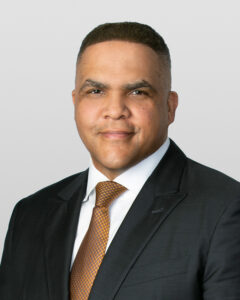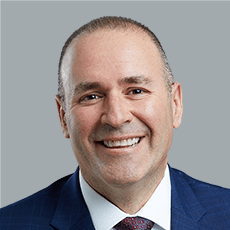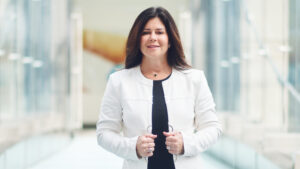If the traditional in-office, nine-to-five workday led to employee burnout, many say the virtual work environment proliferated during the pandemic is leading to another type of exhaustion: Zoom fatigue.
Executive Summary
Despite a shift away from the traditional office environment, employee burnout and fatigue are still presenting challenges as technology becomes the center of the workday. Insurers are learning to strike the right balance and adapt with creative solutions so they can prioritize employees, reinvent their leadership strategies and continue serving customers.This is tiredness or anxiety brought on by the overuse of virtual platforms such as video conferencing, and Itai Ben-Zaken, co-founder and CEO of real estate InsurTech Honeycomb, said the answer could be chocolate.
“Starting the meeting with something fun, like sending everyone chocolate and opening it together before the team meeting,” is one strategy, he said.
As effective as that sounds, he adds that striking the right balance with a virtual workforce may require a more precise solution than simply a spoonful of sugar.
“I find that it’s harder to whiteboard and brainstorm in a remote setup,” Ben-Zaken said. “It’s also harder for people to bond when work is done remotely. We address this by scheduling periodic face-to-face meetings for teams that work closely together and company events where we go hiking together.”
Honeycomb operates on a hybrid schedule, which was in place before the pandemic, but Ben-Zaken said this has been expanded since COVID-19’s onset.
“This new constraint of not being able to physically be in the same location as your co-workers or your customers actually yields opportunities for innovation,” he said. One example is Honeycomb’s virtual property inspection platform, which allows multifamily property owners to take photos of assigned internal and external features of a property using their mobile phones and receive an immediate, bindable quote.
 “This new constraint of not being able to physically be in the same location as your co-workers or your customers actually yields opportunities for innovation.”
“This new constraint of not being able to physically be in the same location as your co-workers or your customers actually yields opportunities for innovation.” Itai Ben-Zaken, Honeycomb
Despite the success of its pandemic-driven hybrid work model, Ben-Zaken said for Honeycomb, nothing beats being in the office.
“When possible, we try to work from the office most of the week,” he said.
Prioritizing Talent and Innovation
Not all companies share that viewpoint, however, and for those that are hesitant or facing challenges with a return to the office, another answer is gaining popularity.
Asynchronous work, which offers flexibility for employees to work on their own time, has been around for a while, experts say, but has grown since the beginning of the pandemic.
“You’re still interacting with people, but the expectation of a reply is not immediate,” said Jen Rhymer, postdoctoral scholar in the Center for Work, Technology, and Organization within Stanford University’s Management Science and Engineering Department.
She said allowing employees to work during the hours that feel most appropriate for them offers a flexibility that doesn’t exist within geographic remote work, in which all employees are expected to work during the same hours and be available for communication throughout a traditional workday.

“When the pandemic started and a lot of people switched to work-from-home, having not done it before, there was a lot coming out around Zoom fatigue and just sort of the exhausting nature of being on Zoom all day,” she said. “So, I think that one of the benefits of asynchronous work is you can think a little bit more critically about when you need to meet and the purpose of those meetings.”
 “You’re still interacting with people, but the expectation of a reply is not immediate.”
“You’re still interacting with people, but the expectation of a reply is not immediate.”
Jen Rhymer, Stanford University
Some insurers have had this method in place long before the pandemic, and one of them is Liberty Mutual.
“Even prior to COVID, we had an established remote work culture,” said Melanie Foley, Liberty’s executive vice president and chief talent and enterprise-services officer. “We offered and continue to offer flextime, part-time work, compressed work week, work-from-home or alternate location options to our employees.”
With a global workforce of 45,000 employees, Foley said this model has served Liberty Mutual well in addressing the stressors associated with the pandemic, such as burnout and a need among employees for greater flexibility in managing work and caregiving responsibilities.
“HR leaders are tasked with defining distinct strategies for supporting employees’ well-being and enabling them to be successful,” she said. “Throughout the pandemic, we have been surveying employees across the globe to stay on the pulse of their sentiments. More than 90 percent of employees have shared that they are satisfied with the flexibility of their work arrangements.”
For other insurers, such as small business-focused InsurTech Pie Insurance, the switch to an asynchronous work model happened primarily because of the pandemic.
“Before the pandemic, we were an office-centric environment,” said CEO and Co-Founder John Swigart. “We would hire people primarily in our office locations. And since the pandemic, we opened up hiring across the country.”

“Activity monitoring systems should use reasonable protocols that help companies keep track of where the members of their asynchronous workforces are and monitor their work patterns over time to develop alert systems based on each worker’s time zone and work patterns.”
Ed Hopkins, Clark Hill
Pie Insurance has office locations in Washington, D.C., and Denver for employees who choose to go into an office, but Swigart said nearly 40 percent of its workforce is fully remote in various time zones across the country, and the strategy has worked well so far.
“We actually have an employee in Alaska now,” he said. “We feel we’ve seen an increase in productivity with the removal of commuting and the inefficiencies of that.”
Asaf Lifshitz, CEO and founder of InsurTech Sayata, echoes Swigart’s thoughts on asynchronous work’s contributions to talent retention and recruitment.
“In an asynchronous environment, managers can seek talent from a much larger pool since people don’t need to be close to an office,” he said. “There are also some employees who are now expecting a hybrid or remote workplace.”
With its workforce split between the U.S. and Israel, Lifshitz said many of Sayata’s U.S. employees work remotely throughout the country. The Israeli team operates on a hybrid model, although this has been made more flexible during the pandemic.
“Being asynchronous gives employees more freedom to keep the hours that work best for them as well as work the way that suits them best,” Lifshitz said. “It allows people to take more responsibility for their work while hopefully feeling more empowered.”
He agrees with Ben-Zaken that it leads to greater innovation as well.
 “Being asynchronous gives employees more freedom to keep the hours that work best for them as well as work the way that suits them best. It allows people to take more responsibility for their work while hopefully feeling more empowered.”
“Being asynchronous gives employees more freedom to keep the hours that work best for them as well as work the way that suits them best. It allows people to take more responsibility for their work while hopefully feeling more empowered.”
Asaf Lifshitz, Sayata
“[It] allows for projects to move along across time zones,” Lifshitz said. “We have staff spanning from San Francisco to Tel Aviv. While one part of the team sleeps, the other can move projects forward.”
Managing Burnout, Cyber Exposure
However, this doesn’t come without challenges, and one big challenge is knowing what type of work is synonymous with an asynchronous model, experts say.
“Synchronous/asynchronous work models don’t have to be absolute,” Lifshitz said. “The trick is knowing which tasks/projects, people and roles lend themselves to working asynchronously.”
This is exactly how insurance brokerage and consulting firm Woodruff Sawyer began its remote and hybrid work initiative, which it calls FlexWork. This predates the pandemic by several years, according to Chief Operating Officer Zac Overbay.
“We started simply by acknowledging what type of work could be done asynchronously and what work could not,” he said. “Some roles require a large degree of physical presence, but even within those jobs, there are still opportunities to provide for a mix of asynchronous work for part of their work week.”
 “There are two types of leaders: those that know the traditional workplace is dead, and those that erroneously think it will return.”
“There are two types of leaders: those that know the traditional workplace is dead, and those that erroneously think it will return.”
Zac Overbay, Woodruff Sawyer
Vanessa Kelly, attorney at law firm Clark Hill, said for this model to work, it requires “careful planning, coordination and constant communication.”
She said that the best management of an asynchronous schedule means clear communication and setting realistic time frames for workloads. Leveraging technology that allows for collaboration is a key part of a successful asynchronous team as well, she added.
“When teams work in an asynchronous manner, they develop a rhythm and come to enjoy the opportunity to connect with colleagues through whatever manner works best,” she said.
Overbay said the best technologies in support of asynchronous work are those that allow teams to stay connected on common goals and tasks. “Slack is a good example of moving conversations that were traditionally done through email and redirecting them to a messaging environment,” he said.
However, all of this technology can lead to employee burnout and Zoom fatigue, particularly as the lines between work and home life become blurrier. Swigart said this is teaching company leaders to be more intentional.
 “When teams work in an asynchronous manner, they develop a rhythm and come to enjoy the opportunity to connect with colleagues through whatever manner works best.”
“When teams work in an asynchronous manner, they develop a rhythm and come to enjoy the opportunity to connect with colleagues through whatever manner works best.”
Vanessa Kelly, Clark Hill
“What leaders have learned is that they can’t just lead by being physically present and counting heads at desks,” he said. “They actually have to be more intentional, establishing norms within their team both in terms of working structures and working agreements. There is more scheduling in a remote world because you can’t count on bumping into somebody in the hall or walking over to their desk. It doesn’t quite work the same way. So, you have to be a little bit more structured, a little bit more intentional.”
Rhymer added that shifting toward fewer meetings while ensuring those meetings are meaningful is another important consideration in avoiding the dreaded Zoom fatigue. “It provides a lot of the flexibility that people assume or want when they think about remote work,” she said. “It’s not really about different tools. It’s about different practices and different norms.”
Less frequent but intentional meeting times can be helpful when real-time communication is necessary to meet project deadlines, allow employees to feel less isolated from their teams or ensure proper communication as written exchanges can sometimes be misinterpreted, Lifshitz said. To avoid Zoom burnout, the company takes a few additional steps as well.
“We often have calls without video so people don’t have to feel as ‘on,'” he said. “We encourage people to have their distinctive home time. Generally, we don’t have scheduled calls with teams in the same region after hours.”
Beyond burnout, another challenge relating to a geographically widespread, tech-reliant workforce is cyber exposure.
“Naturally, it’s a concern,” Lifshitz said. “The larger digital footprint a company has, the more exposed they are to a cyber attack.”
He said the best solutions are putting adequate cyber controls in place, educating staff and planning ahead, as well as securing proper cyber insurance.

“What leaders have learned is that they can’t just lead by being physically present and counting heads at desks.”
John Swigart, Pie Insurance
Ed Hopkins, attorney at Clark Hill, added that remote employees may need to do more of this than in-office workers, particularly when it comes to securing their devices.
“All other things remaining equal, remote workers need to be more knowledgeable about cybersecurity and privacy law compliance than their onsite colleagues,” he said. “For instance, they must prevent innocent housemates as well as malicious eavesdroppers from accessing, overhearing or seeing protected personal data or confidential business information while working remotely.”
Another concern he points to is that members of an asynchronous workforce are likely working or transmitting company information at all hours across global time zones.
“This can pose a challenge to cybersecurity monitoring systems designed to flag suspicious activity that occurs during the hours when most of the people in a given time zone are usually sleeping,” he said. “Activity monitoring systems should use reasonable protocols that help companies keep track of where the members of their asynchronous workforces are and monitor their work patterns over time to develop alert systems based on each worker’s time zone and work patterns.”
He said that all businesses relying on asynchronous work models should have a clearly written remote work policy that explains the technology remote workers will use and what they are required to do to comply with cybersecurity and privacy controls.
“A good practice is to provide training at least annually that is designed to confirm hybrid and remote workers understand how the technology works, why it is important to use the technology correctly, and what to do if they learn, despite their best efforts, that someone else in their household or another third party accessed sensitive personal data or confidential corporate information without legal authorization,” he said. “These remote work policies should be assessed at least annually and, if legislative or regulatory developments require, revised.”
‘Flexibility Is Here to Stay’
Despite some of the challenges, Overbay said the response to a more asynchronous model at Woodruff Sawyer has been overwhelmingly positive among employees.
“The successes are shared in the form of employee stories,” he said. “Stories about how they have time to coach a child’s soccer team, or volunteer in their school, or workout in the middle of the day, or take a class.”
 “Businesses will need to bolster approaches to meet new and existing talent where they are. Regardless of the suite of benefits or technologies a company offers, flexibility is here to stay.”
“Businesses will need to bolster approaches to meet new and existing talent where they are. Regardless of the suite of benefits or technologies a company offers, flexibility is here to stay.”
Melanie Foley, Liberty Mutual
Ben-Zaken said he believes the aspects of a hybrid working schedule that create more efficiencies than challenges will remain in place beyond the COVID-19 pandemic. Swigart agrees.
“I just don’t think the notion of, ‘I’m going to commute 45 minutes into my office for my underwriting job to sit at a desk, and do that five days a week, and then commute 45 minutes home every single day…that’s not coming back,” he said.
With this in mind, Foley said insurers will need to adapt.
“There’s no question that the last two years have had a profound impact on work-life equilibrium across all industries,” she said. “Businesses will need to bolster approaches to meet new and existing talent where they are. Regardless of the suite of benefits or technologies a company offers, flexibility is here to stay.”
Lifshitz emphasizes that this adaptation will need to include aspects of in-person work, as “insurance is still a personal business, and that real-time, human connection will always remain essential.”
Overbay agreed, adding that client support, for example, primarily needs to take place during the traditional workday. “As insurance brokers, our job, first and foremost, is to take care of clients,” he said. “While we do have a great deal of flexibility in when this work can be done, we can’t get away from taking care of clients when they need our advice and support, and that challenges full asynchronous work.”
However, he believes increased flexibility will remain within the workforce, and he has a word of warning for leadership teams fighting the switch to at least a partial remote work model.
“Those employers that ignored the warning signs and drove their employees back into the [workplace] paid dearly for those decisions,” he said. “There’s no doubt it was a key driver to the great resignation. My message to all leadership teams is simple: listen to what your employees value—what’s important to them—and build strategies to support when, how and where employees want to work. There are two types of leaders: those that know the traditional workplace is dead, and those that erroneously think it will return.”
(Correction: A version of this article published in the first-quarter print magazine shows an incorrect photo of Jen Rhymer on p. 22. The correct photo is displayed here.)





















 This article is one of several published in Carrier Management’s first-quarter 2022 print magazine about the post-pandemic work environment in insurance.
This article is one of several published in Carrier Management’s first-quarter 2022 print magazine about the post-pandemic work environment in insurance.
 Viewpoint: Agentic AI Is Coming to Insurance Industry – Much Faster Than You Think
Viewpoint: Agentic AI Is Coming to Insurance Industry – Much Faster Than You Think  How One MGU Grew Fivefold When Capacity Fled Cat-Prone Property Markets
How One MGU Grew Fivefold When Capacity Fled Cat-Prone Property Markets  AI in Property/Casualty Insurance: Why Trusted Data Is the Missing Link
AI in Property/Casualty Insurance: Why Trusted Data Is the Missing Link  Police Recover Swallowed Fabergé Pendant 6 Days After it Was Stolen
Police Recover Swallowed Fabergé Pendant 6 Days After it Was Stolen 





